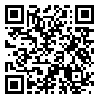Volume 6, Issue 2 (summer 2002)
jwss 2002, 6(2): 91-103 |
Back to browse issues page
Download citation:
BibTeX | RIS | EndNote | Medlars | ProCite | Reference Manager | RefWorks
Send citation to:



BibTeX | RIS | EndNote | Medlars | ProCite | Reference Manager | RefWorks
Send citation to:
M. A. Edriss, M. Mostajeran, R. Ebadi. Correlation Between Honey Yield and Morphological Traits of Honey Bee in Isfahan. jwss 2002; 6 (2) :91-103
URL: http://jstnar.iut.ac.ir/article-1-24-en.html
URL: http://jstnar.iut.ac.ir/article-1-24-en.html
Abstract: (23852 Views)
To estimate the relationship between honey yield and some of the morphological characters, five queen-daughters from each of 30 queen-mothers were studied. The queen-mothers were selected randomly from the apiary of Research Center of Animal Science and Natural Resources in Isfahan Province. Summer honey yield was measured from the difference of honey comb before and after honey extraction while fall honey production was calculated from area of sealed honey combs. Morphological characters were recorded using a stereodissecting microscope fitted with a calibrated micrometer reticule according to Ruttner’s procedures.
The mean of honey yield for a year was estimated to be 10.05 kg. Phenotypic correlations between yearly honey production and summer and fall honey productions were estimated to be 0.49 and 0.88, respectively, while the correlation between summer and fall honey yields was low (0.019). There were significant correlations between summer honey yield with cubital-b index, tibia length and forewing width (0.28, 0.27 and 0.25, respectively). Also there were significant correlations between metatarus width with total and fall honey yields (0.22 and 0.23, respectively). Genetic correlations between metatarus length and cubital index with summer honey yield were negative (-0.75 and
-0.45, respectively). It may be concluded that due to the high correlation between summer honey production and total honey yield, one could improve yearly honey production by selecting on the basis of summer yield of colonies. Among morphological traits, metatarus length, forewing width and cubital index could be used in the breeding plan in order to increase honey yield.
| Rights and permissions | |
 |
This work is licensed under a Creative Commons Attribution-NonCommercial 4.0 International License. |





